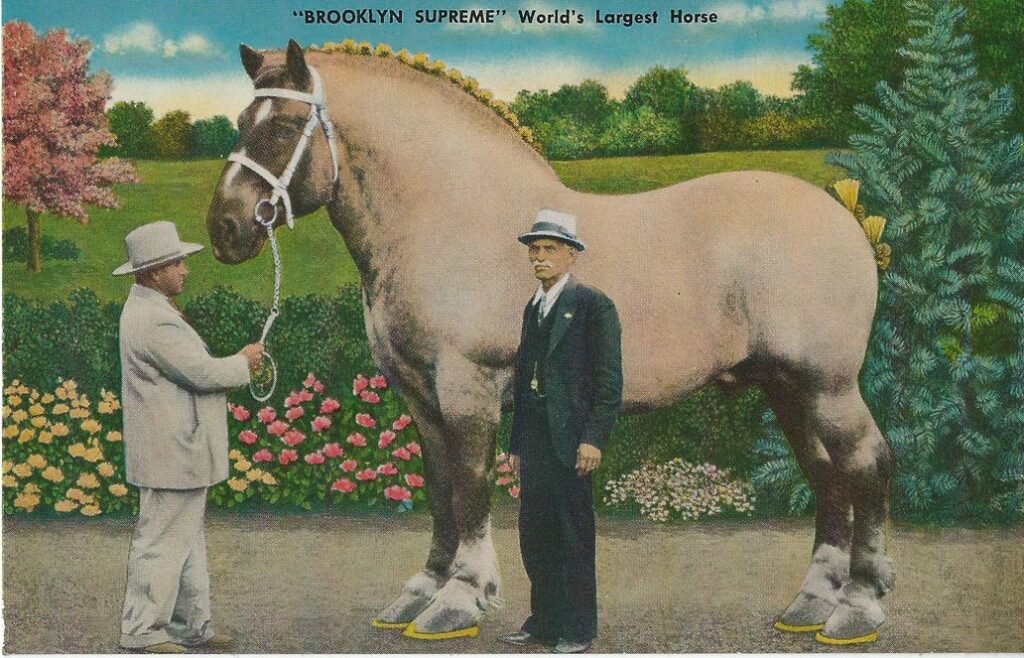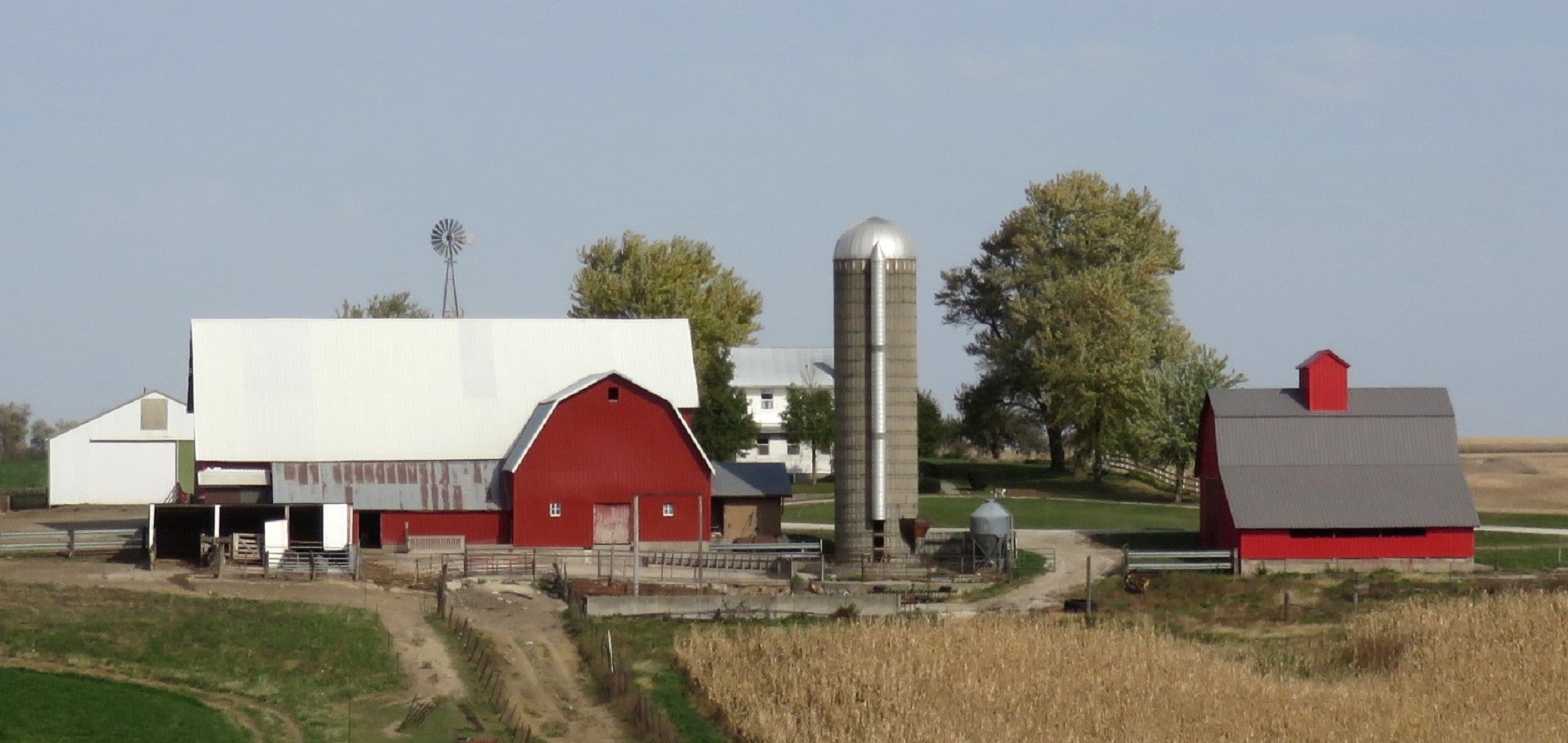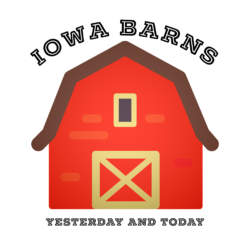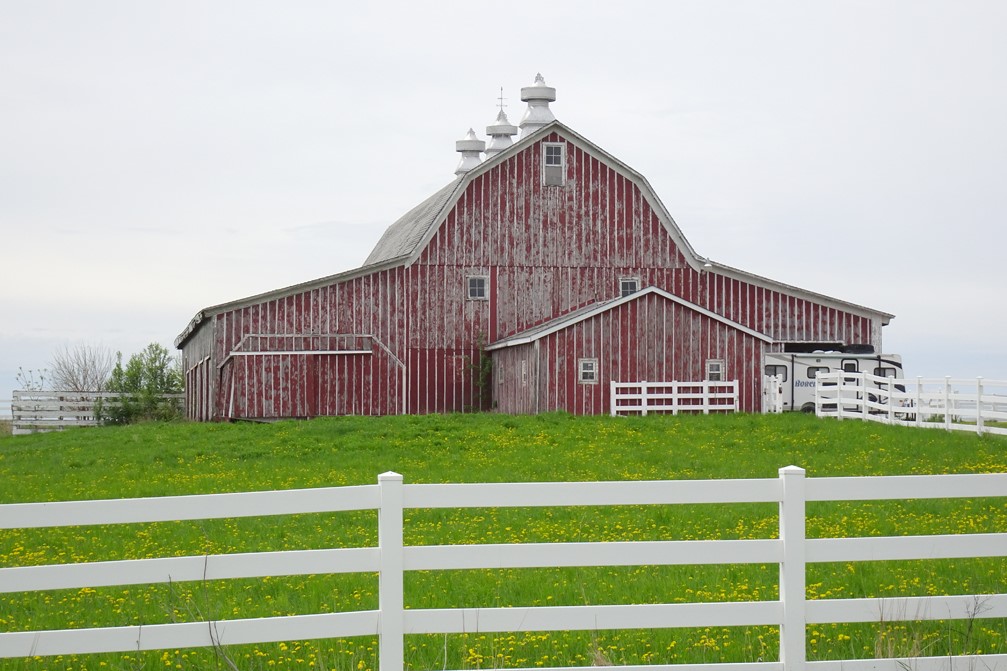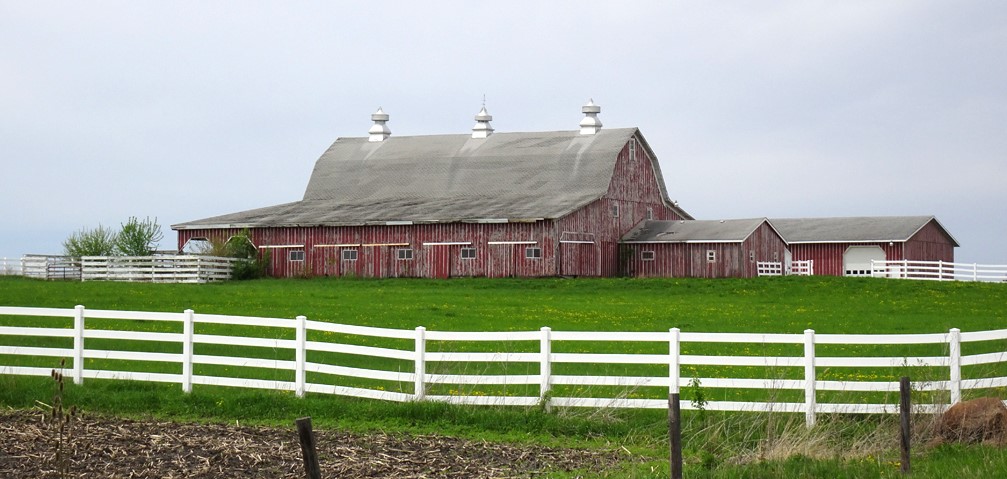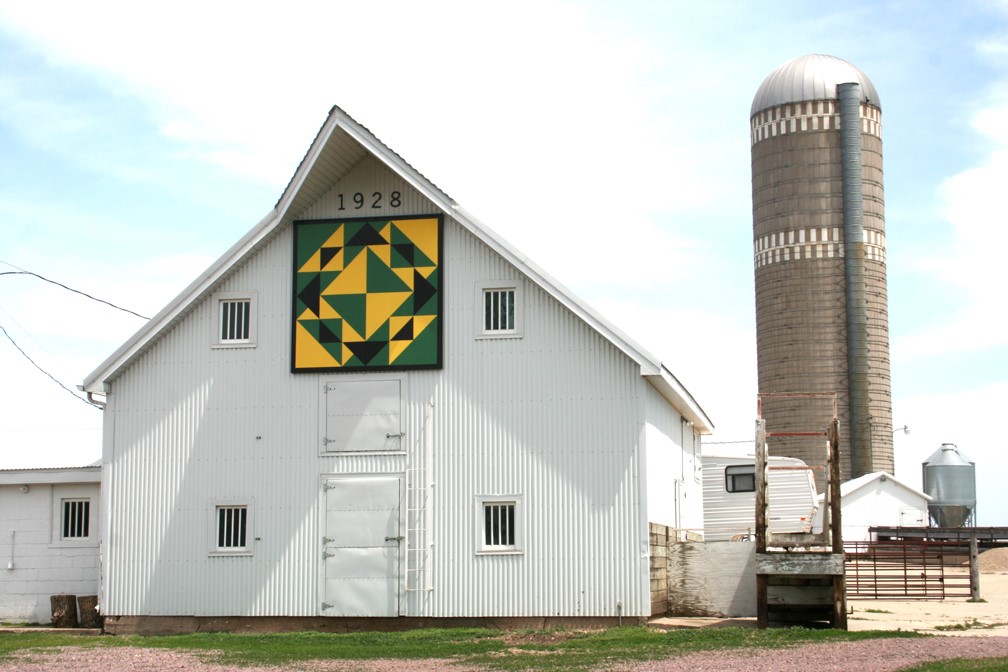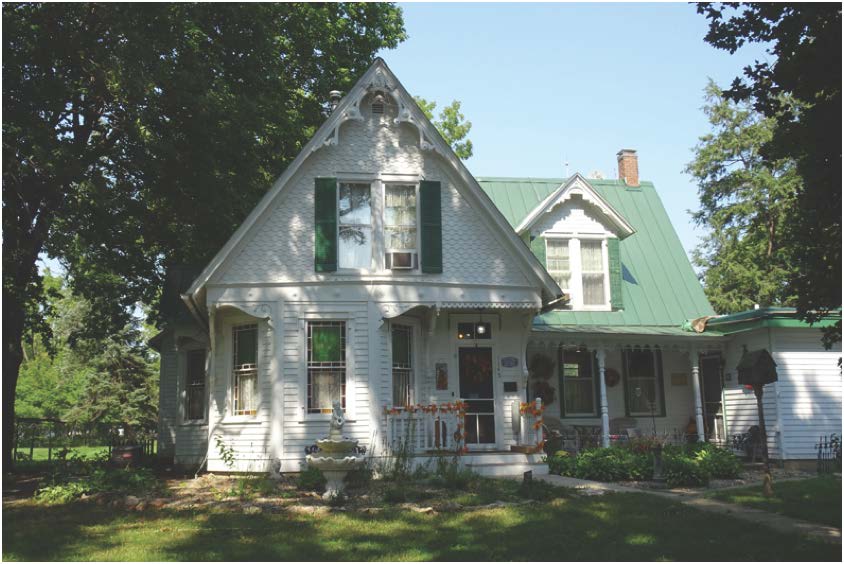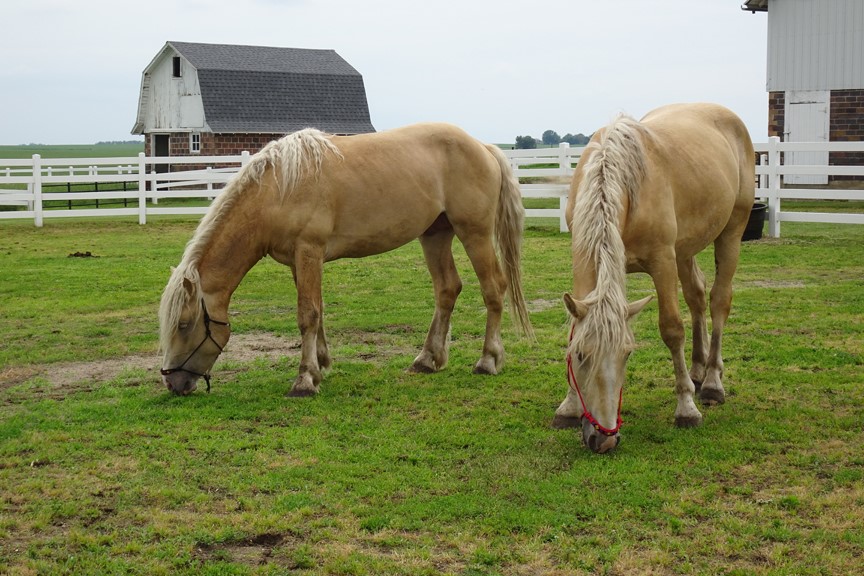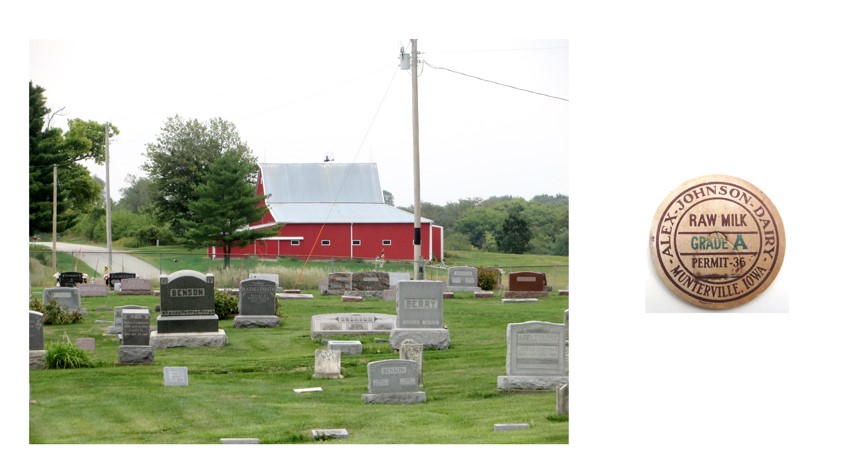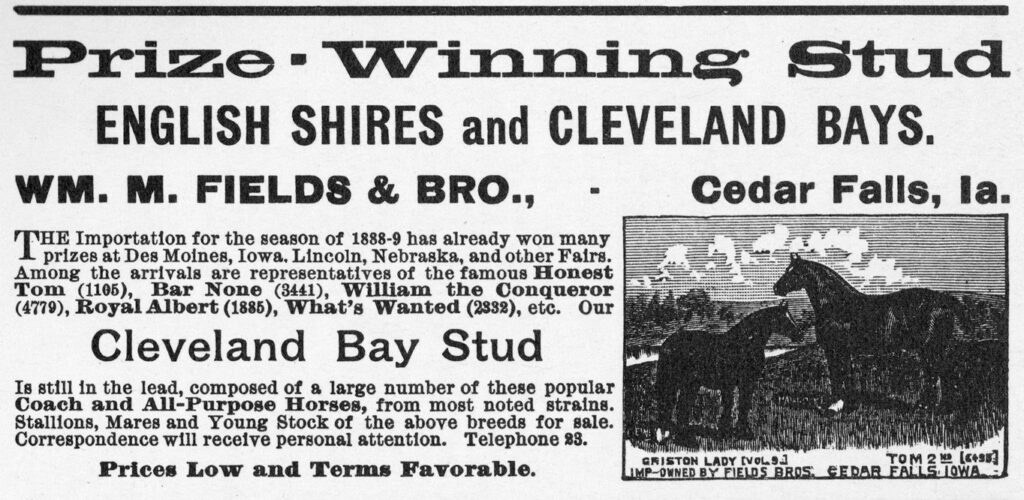Few horses were in Iowa in early times because they were too expensive and not strong enough for breaking prairie sod. Instead, oxen were used to pull the prairie schooners and for farming. Farmers went to northern European countries to bring back larger horses, able to work in agriculture and industry. Percherons and other French draft breeds were early imports.
Mules and horses eventually replaced oxen. In the 1850 census there were over 38 thousand horses, mostly in southern and eastern Iowa.
In the 1880s the first Belgians were imported. A famous Iowa horse, Farceur, a Belgian, who was a San Francisco World’s Fair Champion, was purchased in 1917 by C.G. Good. He was a service stud who died in 1921 and is buried in a stall at Oakdale Farm, near Ogden. See page 83 in Iowa Barns yesterday and today for a photo of Farcour’s barn.
Farcour’s great-grandson, Brooklyn Supreme, weighing 3,200 pounds, was the world’s largest horse at one time. He was bought by C.G. Good, who hired Ralph Fogleman to travel with the horse around the country, charging spectators 10 cents. He died in 1948 at age 20.
Below is a postcard sold to spectators. C.G. Good is on the right and Ralph Fogleman is on the left. The background is typical of postcards of the time.
